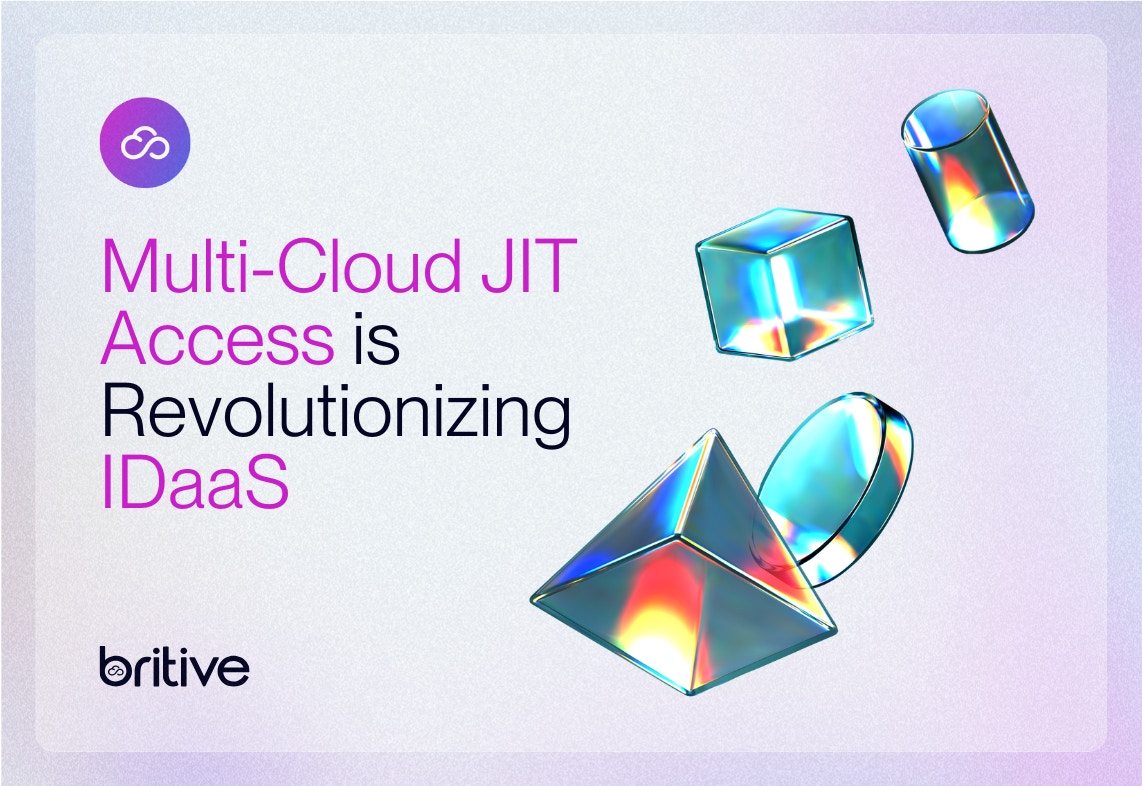


Back to resources
Why Cloud-Forward Tech Teams Need to Abandon Traditional IAM and PAM
October 2023 / 5 min. read /

Most modern tech teams are aware that the cloud has become the backbone of innovation, scalability, and agility. However, with great power comes great responsibility, particularly when it comes to securing cloud resources and data. This is precisely where Identity and Access Management (IAM) and Privileged Access Management (PAM) have traditionally played instrumental roles.
However, the limitations inherent in these traditional approaches have become clearer in recent years. In this blog post, we’ll explore how forward-thinking organizations are moving away from conventional IAM and PAM solutions and migrating towards contemporary, cloud-native access management solutions.
The Constraints of Traditional IAM and PAM
Traditional IAM and PAM solutions were designed when on-premises systems dominated the information technology domain. They served their purpose, establishing a framework for the administration of user identities, the enforcement of access policies, and the security of privileged accounts. However, as enterprises transitioned towards cloud adoption, these legacy tools have become increasingly antiquated.
Limitations in Scalability
One of the foremost constraints of traditional IAM and PAM solutions resides in their inability to scale fluidly in cloud-forward operations. The dynamic nature of cloud environments requires organizations to find sprawl-mitigating solutions to provisioning resources on demand. Traditional access systems often falter in the face of cloud scalability, which results in manual and time-intensive permissioning processes.
Complexity in the Multi-Cloud Landscape
The Britive 2023 State of Cloud Identities and Privileges Report underscores the burgeoning prevalence of multi-cloud environments and reinforces the fact that traditional IAM and PAM solutions are failing to meet multi-cloud access needs. Each cloud platform boasts its own arsenal of native access tools, but none function cross-cloud.
Legacy IAM and PAM tools hinder DevOps
DevOps teams need to be agile. Yet, traditional IAM and PAM solutions frequently introduce friction into the development pipeline by necessitating manual access provisioning. These bottlenecks can slow down development cycles and increase operational expenses.
The Cloud-Native Alternative: Just-in-Time Access Management
In an endeavor to surmount the encumbrances of traditional IAM and PAM, it is incumbent upon tech leaders to contemplate the adoption of a cloud-native access management paradigm, with a specific emphasis on the concept of Just-in-Time (JIT) access management. JIT access management harmonizes seamlessly with the cloud's dynamic and scalable attributes, affording several pivotal advantages:
Elastic Scalability
JIT access management solutions, as expounded upon in the Britive 2023 report, exhibit the capacity to scale organically with your cloud milieu. They facilitate automated provisioning and deprovisioning of access contingent on user requisites, thereby obviating the necessity for manual interventions. This elasticity ensures that your access management strategy remains congruent with the crescendo of your cloud infrastructure.
Multi-Cloud Compatibility
Modern JIT access management solutions are architected with multi-cloud compatibility as their lodestar. They offer a unified platform for the administration of access across diverse cloud providers, simplifying access management within intricate, multi-cloud domains. This aligns with the discoveries of Britive report, which illuminates the trend towards multi-cloud strategies.
Key Takeaways from the Britive 2023 Cloud Access Management Report
The Britive 2023 State of Cloud Identities and Privileges Report dissects the challenges and trends in the current cloud security landscape. Below, we distill the key takeaways that underline the need to move away from traditional IAM and PAM solutions:
Ascendant Multi-Cloud Adoption
The report underscores the continued and accelerated trend of multi-cloud adoption, with organizations harnessing multiple cloud providers to fulfill their unique needs. This trend spotlights the necessity for a unified access management solution capable of traversing cloud realms—a capability that traditional IAM and PAM solutions lack.
Vigilance Against Privilege Sprawl
Privilege sprawl, the accrual of too many static permissions over time, is identified as a common pitfall of cloud security. Traditional IAM and PAM solutions are inadequately equipped to redress this issue, as they often don't have the automation and granularity needed to enforce a least privilege posture. JIT access management solutions are designed to combat privilege sprawl by enabling organizations with automated and simplified control.
Competitive Advantage Through DevOps Efficiency
The report underscores the salience of DevOps efficiency in the preservation of a competitive edge. Traditional IAM and PAM solutions hinder DevOps processes by instating manual access management procedures. JIT access management, by contrast, streamlines these processes and allows tech teams to function more efficiently.
Keys to a Successful Transition to JIT Access Management
The transition to a JIT access management modus operandi necessitates a deliberate realignment of mindset and technological adoption. Herein, we outline a blueprint to expedite this transition within the auspices of your tech organization:
Scrutinize Your Existing IAM and PAM Configuration: Start by evaluating your organization's current IAM and PAM solutions, identifying their limitations and areas of incompatibility within multi-cloud environments.
Get A Birds-Eye View of Your Cloud Environment: Develop a strong understanding of your enterprise's cloud landscape, considering the roster of cloud providers in use and the requisites of your tech stack.
Shop the JIT Access Management Solutions: Investigate and explore JIT access management solutions that seamlessly dovetail with your cloud strategy. Prioritize solutions that offer scalability, multi-cloud compatibility, and automation capabilities.
Consider Pilot Deployment: Pilot deployment is a great way to experiment with a selected JIT access management solution within a controlled environment. This will facilitate an appraisal of its efficacy and afford the latitude for requisite fine-tuning.
Educate Your Tech Cohorts: Train your tech teams on navigating and harnessing the new cloud access management paradigm. Emphasize the advantages of JIT access management to enable DevOps efficiency.
Sustain Vigilance and Optimization: Uphold a regimen of perpetual evaluation and optimization in your JIT access management strategy. Conduct periodic reviews and recalibrations of access policies to synchronize with your organization’s ever-evolving cloud landscape.
Traditional IAM and PAM solutions are akin to typewriters in the modern age. They are, regrettably, ill-suited to meet the needs of the modern, cloud-centric business landscape. Embracing cloud-native access management, and JIT permissioning in particular, is an important stride towards transcending the limitations of conventional approaches. Insights from the Britive 2023 State of Cloud Identities and Privileges Report amplify the urgency of this transition. Through this strategic realignment, organizations can not only fortify their cloud security domains but also enable a new level of agility and innovation within their operations.

